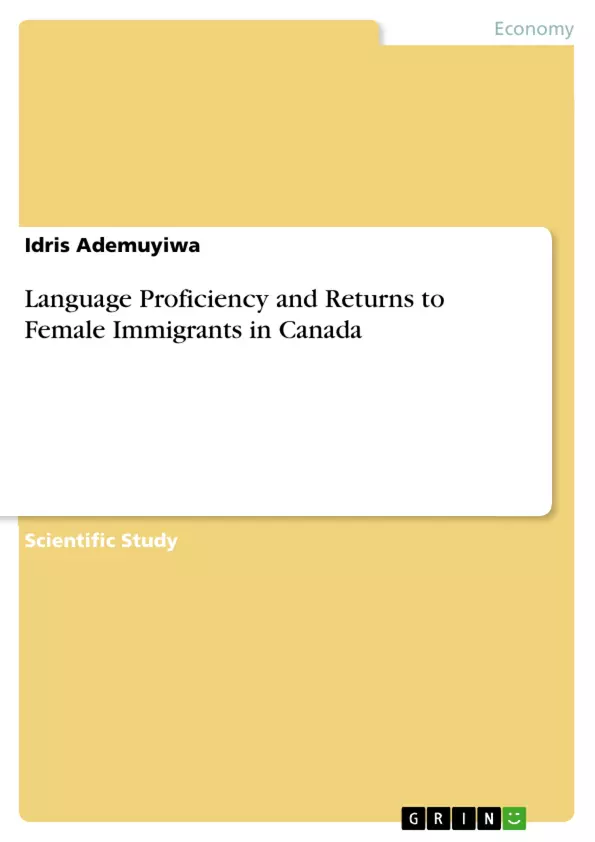The literature on returns to immigrants has paid little attention to female immigrants despite continuous increases in female labor force participation and its peculiarities.
Using the 2011 National Households Survey of Canada, this paper investigates the effect of language proficiency on returns to female immigrant groups in Canada and the effect across wage distributions.
Our results show that returns to female immigrant groups increase with the level of language proficiency and that language penalizes immigrants at higher quantiles of wage distribution more. Also, we find that OLS estimates are biased and inconsistent where sample selection problems exist.
Inhaltsverzeichnis (Table of Contents)
- Introduction
- Data
- The Models
- Results
- Conclusion
Zielsetzung und Themenschwerpunkte (Objectives and Key Themes)
This research paper investigates the impact of language proficiency on the earnings of female immigrants in Canada, considering both the heterogeneity of immigrant groups and the effect across income distributions. This study aims to determine whether differences in language proficiency among female immigrant groups affect their earnings in the Canadian labor market and to analyze the relationship between language proficiency and earnings across different income levels.
- Impact of language proficiency on returns to female immigrants
- Differences in language proficiency among immigrant groups
- Effect of language proficiency across income distributions
- Selection bias in the analysis of immigrant returns
- Heterogeneity of immigrant groups
Zusammenfassung der Kapitel (Chapter Summaries)
- Introduction: The introduction highlights the declining entry earnings of recent Canadian immigrant cohorts and identifies language proficiency as a major contributing factor. It emphasizes the need to address the specific experiences of female immigrants, considering their increasing labor force participation and the distinct nature of their labor supply decisions. The chapter outlines the study's objectives: to examine the impact of language proficiency on female immigrant earnings and to analyze the effect across different income levels.
- Data: This section details the data sources used in the study, primarily the 2011 National Household Survey (NHS 2011) Public Use Micro Files (PUMF). It highlights the strengths of the NHS 2011 data, emphasizing its size, detail, and representative nature. The section also explains the selection criteria for the sample, focusing on female adult immigrants aged 18 to 65, who represent the primary target group of the analysis.
Schlüsselwörter (Keywords)
This paper focuses on the impact of language proficiency on the earnings of female immigrants in Canada. Key concepts include returns to immigrants, language proficiency, heterogeneity of immigrant groups, income distributions, and selection bias. The study utilizes quantile regression with selectivity bias to analyze the relationship between language proficiency and earnings, focusing on female immigrant groups in Canada.
- Quote paper
- Idris Ademuyiwa (Author), 2016, Language Proficiency and Returns to Female Immigrants in Canada, Munich, GRIN Verlag, https://www.grin.com/document/343171



